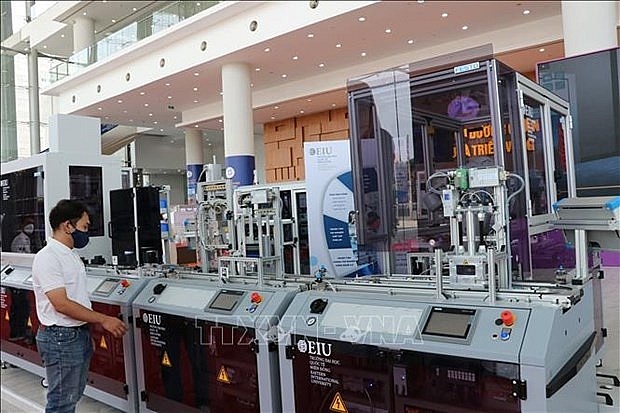Vietnam sees increasing workforce quality
 |
| Illustrative image (Source: VNA) |
Hanoi – The number of Vietnamese labourers aged from 15 reached some 51.2 million in the first quarter of this year, up 200,000 as compared with the same period last year, according to the General Statistics Office (GSO).
Of the figure, 50 million people have got jobs, up 132,200 year-on-year, with those working in the service sector making the largest share (38.7 percent), followed by industry and construction (33.5 percent), and agro-forestry-fishery (27.8 percent).
The office said the programme on socio-economic recovery and development in line with Resolution No. 11/NQ-CP with specific measures has warmed up the labour market in the first three months.
Meanwhile, around 1.3 million people were unemployed, down 135,200 from the previous quarter.
Living standards of labourers have been improved and their average income has been restored significantly.
The Business Registration under the Ministry of Planning and Investment said despite severe impacts of the COVID-19 pandemic, business operations have bounced back since December 2021 thanks to the Government’s flexible measures in response to the pandemic.
ILO Vietnam Labour Economist Valentina Barcucci said in 2000, 65.3 percent of the employed labour force was in agriculture. Twenty years later, those two-thirds fell to a little more than one third (37.2 percent). That additional third is roughly split between services and industry.
While in 2000, agriculture was by far the biggest employer in the country, today services and agriculture are virtually equal (37.3 and 37.2 percent respectively), followed closely by the industry sector (25.5 percent of employment).
The low value-added manufacturing that accounts for most of the current FDI has been instrumental to fuel economic growth. To secure further economic development, a higher value-added industry, more innovation and a higher-skilled labour force are necessary.
The country will need a new growth model to move out of the risk of a lower middle-income trap and achieve modernisation, industrialisation, as well as sustained growth. This calls for a modernized labour market too, she said.
Labour productivity of the whole economy at the current price is estimated at 171.3 million VND (7,398 USD) per worker, 538 USD higher than that of 2020. The labour productivity in 2021 increased by 4.71 percent due to improved qualifications of workers with the proportion of trained workers with degrees and certificates in 2021 reaching 26.1 percent, higher than the 25.3 percent of 2020.
The productivity, however, is still much lower than that in other countries in the region like Singapore, Malaysia, Thailand and Indonesia, said Bui Quang Tuan, Director of the Vietnam Institute of Economics.
According to the World Bank (WB), between 2010 and 2020, the Human Capital Index (HCI) value for Vietnam increased from 0.66 to 0.69, higher than the average of the countries that have the same income with Vietnam.
Vietnam is one of the countries in East Asia-Pacific that have the highest HCI, reflecting its great achievements in education and health care over the past years, the bank said.
What the stars mean:
★ Poor ★ ★ Promising ★★★ Good ★★★★ Very good ★★★★★ Exceptional
Related Contents
Latest News
More News
- Protect what’s next: towards a future free from meningococcal group B disease (December 05, 2025 | 18:00)
- New ILO report offers policy recommendations for disability inclusion (December 04, 2025 | 15:18)
- Maternal job loss may affect children’s mental health, research shows (December 03, 2025 | 19:11)
- Women lead Vietnam’s shift to climate-resilient agriculture (December 03, 2025 | 19:10)
- Experts highlight unpaid care work as key barrier to gender equality (December 03, 2025 | 15:15)
- Opportunities and inequalities for women workers in Vietnam's garment industry (December 03, 2025 | 09:00)
- Vietjet flights carry love to devastated central region (November 28, 2025 | 11:35)
- New initiative to boost the fight against domestic violence (November 26, 2025 | 10:00)
- South Korea funds IOM relief for Vietnam’s typhoon-affected communities (November 24, 2025 | 15:33)
- AI and human-centred values set to shape the future of HR in Vietnam (November 21, 2025 | 18:04)

 Tag:
Tag:





















 Mobile Version
Mobile Version